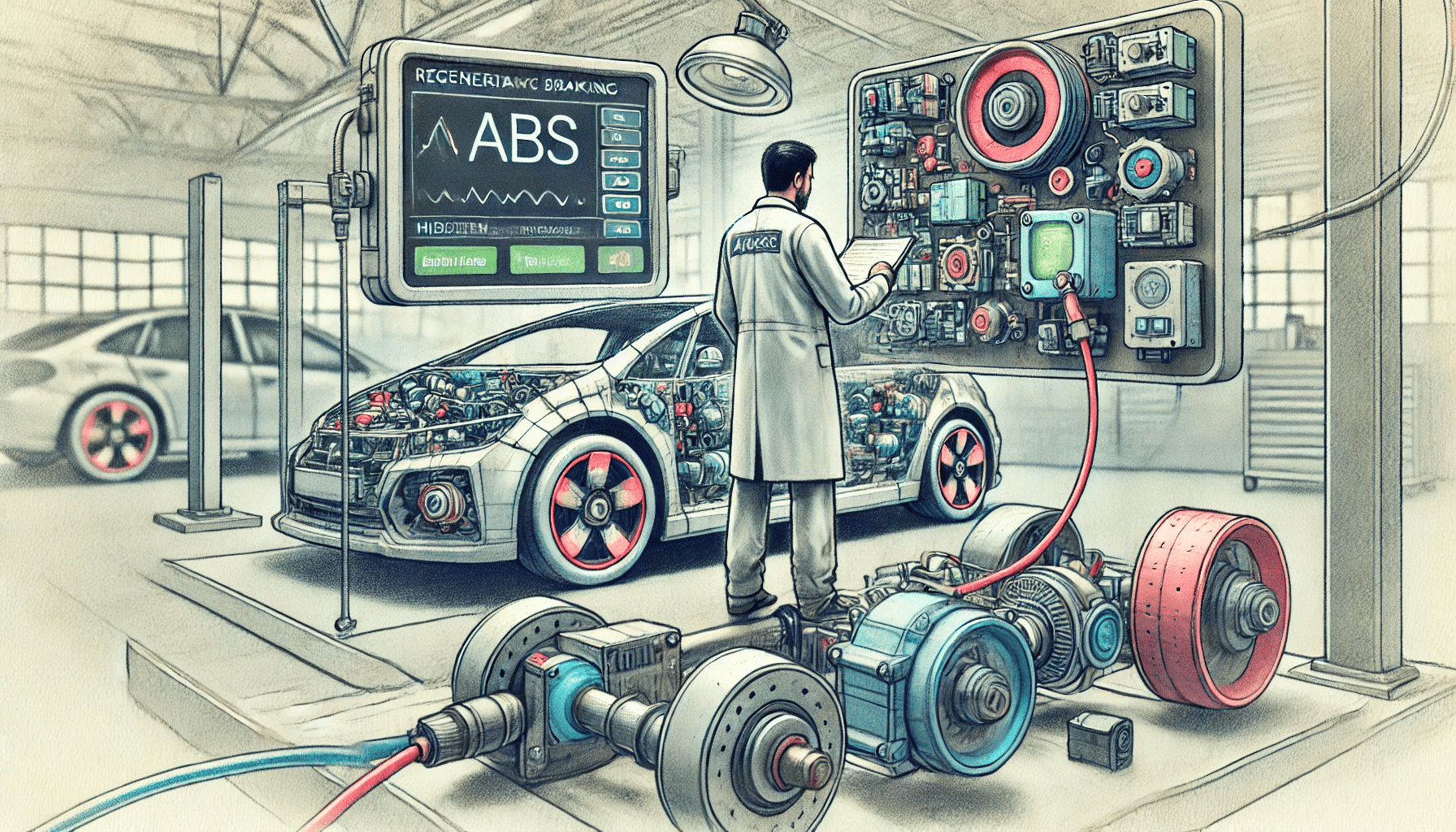Electric vehicles, with their silent dynamics and instantaneous torque, place new demands on safety systems, particularly ABS. Even if there are no errors in the diagnostic systems, the anti-lock braking system may not function correctly and remain invisible to standard diagnostics. Such hidden failures become apparent only in emergency situations, turning them into a serious risk. Therefore, diagnostics requires not only technical knowledge, but also an understanding of the interaction of ABS with an electric drive.
The absence of error codes does not always mean that the system is working properly. In electric vehicles, ABS is integrated with a regenerative braking system, which makes it more difficult to detect malfunctions. Wheel sensors or a pressure modulator may fail without being recorded in the ECU’s memory. Similar problems arise in other areas, for example, when tuning the exhaust systems of cars running on gas, where the balance between power and environmental friendliness is important.
Manufacturers are actively implementing adaptive ABS algorithms, but their sensitivity to interference or component wear is often underestimated. Mechanics face a paradox when the system is” clean ” for diagnostics, but the driver complains about strange behavior when braking. A comprehensive approach includes mechanical component testing, real-time data analysis, and multi-mode test drives.
Mechanical and software nuances of diagnostics
Electric vehicles use ABS not only for safety, but also to optimize heat recovery, which increases the load on the system. Wheel sensors can get dirty or lose calibration without generating errors. Checking clearances and wiring integrity often reveals hidden defects.
Software failures are less common in diagnostic reports, but their impact is no less severe. ABS firmware may conflict with vehicle main software updates, especially after service intervention. Analysis of CAN bus logs helps to detect anomalies in data transmission between modules. Sometimes the problem is solved by flashing the ABS unit without replacing the hardware.
Simulation of emergency braking on a stand or closed landfill is the last stage of testing. Even a minimal deviation in the ABS response rate indicates a non-obvious malfunction. It is important to compare system behavior with model-specific benchmarks. Electric vehicles require more attention to detail, as their braking systems operate in more difficult conditions.
Non-obvious signs of ABS malfunction
Sometimes the ABS shows problems without obvious symptoms, but an attentive driver may notice indirect signals. For example, when braking lightly, the pedal sometimes pulsates, although the system should not be activated in this mode. This may indicate that the modulator valves are jammed or that the sensors are dirty. In electric vehicles, such signs are often masked by heat recovery, so it is important to check:
- Smooth deceleration when recovery is disabled (“Neutral” mode).
- No false ABS alarms on a flat, dry surface.
- Uniform braking force during repeated tests.
These observations help identify early stages of component wear that are not detected by the scanner.
Another alarm signal is a change in the car’s behavior during the transition from regenerative to frictional braking. If the driver feels a jerk or delay, it is possible that the ABS does not properly distribute the load between the systems. Electric vehicles are particularly sensitive to such failures due to the complex interaction of algorithms. Verification requires real-time data analysis, for example, through diagnostic software with a graph function.
Finally, you should pay attention to power consumption: a faulty ABS can cause an increased load on the 12-volt network. This is rarely recorded as an error, but it manifests itself in the form of flickering lights or media failures when braking. Diagnostics includes measuring the voltage on the ABS module during its activity and comparing it with the manufacturer’s standards.
ABS diagnostics through real-time data analysis
Modern scanners do not always detect intermittent ABS failures, but recording parameters in motion helps to identify anomalies. It is critically important to monitor the reaction speed of the wheel sensors during sudden braking. Electric vehicles may experience delays in data transmission due to interference from the high-voltage system. Comparing the readings of the left and right sensors often reveals discrepancies that are not noticeable in static mode.
Software tools like CAN analyzers allow you to study the operation of ABS in detail without relying on standard error codes. For example, an uneven change in the frequency of the sensor signal indicates mechanical problems. In electric vehicles, you should pay attention to the correlation between heat recovery and ABS activity. Even minimal deviations from the norm can signal the beginning of wear.
A test drive with connected diagnostic equipment is the most reliable method of verification. It is recommended to simulate different conditions: wet surfaces, sudden braking, transitions between recovery and friction brakes. The key point is to capture the slightest deviations in the system’s behavior. This requires experience, but prevents serious breakdowns in the future.
Prevention and maintenance of ABS in electric vehicles
Regular maintenance reduces the risk of hidden ABS failures, especially in high-load environments. Cleaning the wheel sensors and checking the integrity of their wiring should be part of routine maintenance. In electric vehicles, it is important to consider the impact of electromagnetic interference on sensitive electronics. Manufacturers recommend using only original spare parts to replace ABS components.
Software updates can eliminate non-obvious conflicts between systems. Many ABS problems are solved by flashing the control unit without physical intervention. You should check that the software is up-to-date every time you visit the service. Electric vehicles are particularly dependent on the correct operation of all electronic modules.
Training of personnel to work with hybrid and electric models is the key to accurate diagnostics. Mechanics should understand how ABS interacts with regenerative braking. A comprehensive approach includes not only instrumental verification, but also analysis of driver complaints. This minimizes the risks associated with false scanner readings.
Questions and answers
Some failures, such as sensor contamination or valve jamming, do not always generate error codes. Electromagnetic interference in electric vehicles can also affect the operation of the system.
It is necessary to conduct a test drive with real-time data recording, check the mechanical components and compare the sensor readings. Analysis of the system’s behavior under different braking conditions often reveals hidden problems.
Pedal pulsation during light braking, jerky transitions between recuperation and friction brakes, and increased power consumption can signal problems.
AB Diagnostics

